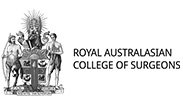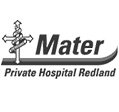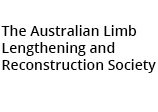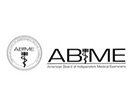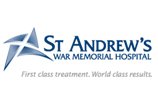ACL Rehab Programme
Protocol Following ACL Knee Surgery
The following programme represents a fairly conservative approach to ACL rehabilitation. We are in no hurry to rush your progression through this programme, although some people will find themselves ahead of this schedule at various times. As with many injuries, the balance will be struck between where you feel you are and where the medical and rehab staff believe you to be.
Each surgical procedure is different and time-frames will vary depending on whether meniscal repairs were made, postero-lateral corners tightened, medial ligament involved etc.
It is important to be sensible in your approach and not to overestimate your ability. We have tried to devise some parameters that give you some idea as to when to progress to each level. It is vital that before you attempt anything new, you have the approval of your physiotherapist.
Don’t be concerned if you are not familiar with the physiotherapy jargon describing the exercises at various stages. Your physiotherapist will explain and show you how to do them.
0-6 Weeks
At this stage the knee is fairly stiff and sore and the physiotherapy is limited to helping you regain some confidence in your ability to move and strengthen the knee.
Aims:
- Facilitate healing
- Regaining basic range of motion
- Basic quads/hamstring maintenance as well as glutes, calf etc.
Precautions:
- Excessive extension (places strain on the graft)
- Doing too much when feeling good
Remember:
- At all times in your rehabilitation, if the knee is swelling or aching excessively, you are doing too much.
- In this initial 6 weeks, you are trying to regain a comfortable range of motion, and re-educate quads/hamstring safely in an effort to create a platform to enable you to tolerate weight-bearing.
Exercises:
- Mon weight bearing quads/hamstrings
- Co-contractions
- Glute/calf drills
- Range of motion gaming drills
- Hamstring flexibility/quad flexibility
4 Weeks
- Wall sits
- Step-ups
- Hamstring curls (Theraband)
Others:
- Swimming pool
- Walking, high knee lifts etc
- General swimming (pool buoy initially, no breast-stroke no kicking etc)
- Gentle bike (stationary only – no resistance, no discomfort)
6-12 Weeks
At this stage, a platform should have been created where you feel confident in the ability to take controlled weight through the knee. The important aspect at this stage is the window period (from 6–10 weeks) where the graft is actually at its weakest. The trap here is to attempt to do too much with the knee and be over confident.
Aims:
- Improve strength/endurance
- Gain full range of movement without pain (not hyperextension)
Remember, at this stage you are trying tob create a platform, for your knee to tolerate running and proprioception drills. To strengthen safely is the priority.
Exercises:
6 Weeks
- Wall sits
- Step downs/ups
- ½ Lunges
- Eccentric hams drills
- Flicks and wobbles (dynamic hams)
All these exercises are to be performed with good technique and in control.
8 Weeks
- Interim Gym Programme: (Pre-requisite is a full pain-free range of motion)
- Leg press
- Incline leg press
- Hack squat
- B/B Step ups/downs
- Seated hamstring curls
10 Weeks
- Can tolerate the above programme for 2 weeks
- Smith squats
- Squats (no pain)
- Split squats
- Dead lifts
Hamstring programme:
- Weight bearing knee extension (theraband resistance)
- Prone alternate curls (leg wts – 2kg)
- Over edge of bed kickbacks (leg wts – 2 kg)
- Over edge of bed flicks and wobbles (2 kg)
- Theraband resisted hip extension in standing
- Chair bridging (2 legs)
- Swiss ball with curls
Cross Training modalities:
- Pool running
- (Vest or floatation belt)
- C-V training (intervals for general fitness etc)
- Bike
- Rower (not meniscal repairs)
- Stepper/Versa-climber (90 degrees only, not meniscal repairs)
- Walking
Proprioceptive Drills:
- Single leg wobble board balance
- Rebounder jogs and stops
- Single leg rebounder balance
12-18 Weeks
At this stage a good strength base should have been attained. This strength programme continues and overlaps the new exercises, which are now aimed at creating a platform for you to tolerate speed and changes in direction.
Aims:
- Improve endurance
- Improve proprioception
- Initiate power activity
Exercises
12 Weeks
- Jumping forwards/backwards (2 legs)
- Jumping side to side (2 legs)
- Bike work with cleats can be introduced
- Gym
- Lunges
- Clock lunges
- Prone hamstring curls
14 Weeks
Proprioception programme (Cont’d):
- Rebounder ballwork (2 pillows at home)
- Hopping drills (jump-stop, hop-stop, from 3 inches to 8 inches etc)
- Obstacle hopping, grid hopping
- Step and ladder running
16 Weeks
Running programme
Running should be developed gradually, from the rebounder to technique running in the clinic (towards a mirror), and progressed by about the 16 week mark to treadmill running (3-5 mins max). If you are tolerating this well, progress to field jogging in combination with walking (i.e. walk 30 metres – job 30 metres). Gradually increase the jog component once you have confidence in a straight line. (Pre-requisites: Dynamic proprioception skills good and can hop-stop from 3 inches).
Pool programme – progress to kicking drills swimming and then to flippers.
18-26 Weeks
At this stage the leg should be strong and muscular endurance developing via the strength and running programme. It is now that your rehabilitation is aimed at creating a platform for you to tolerate return to sport. A cybex test at this point is a useful means by which we can measure quads and hamstring strength and compare the ratio of these muscles to the other leg.
Aims:
- Concentrate on power development
- Agility drills and changes in direction
- Improve upon hamstring and quads strength
Exercises:
- Gym programme continues
- Cross-training programme continues
- Running programme continues
As confidence in a straight line improves, add some acceleration and deceleration drills (nothing explosive) and then some wide gradual curves. Jogging and ball passing can also be added within confidence. By about 20 weeks, sharper direction changes can be introduced.
18 Weeks
- Around markers (‘s’ curves)
- Zig-zag around markers (sharper turns)
- Side to side running
- Combination of forward/backward and side to side running drills
- Faster stop/start and acceleration/deceleration drills
- Stepping drills (begin slowly, and increase speed towards a “cutting” manoeuvre
- Figure 8’s around goal posts
20 Weeks
- Basic agility work
- Malcolms & off-the-ground drills
- Shuffling drills
- Lateral bounds
22 Weeks
- Road running for general fitness (this should not form the majority of your fitness work)
- Power Programme
- Jump squats
- Height jumps
- Heiden bounds
- Block jumps
- Hurdle jumps
24 Weeks
Functional agility drills:
- Forwards/backwards
- Grapevine running
- Ladder running
- Defensive drills
- Swerving drillsFigure 8’s
- Stepping and cutting
26 Weeks
Team drills (non contact)
26-32 Weeks
By now we are refining the rehabilitation to a team setting and adding opposed drills to create a platform to return to play.
28 Weeks
- Tackling
- Being tackled
- Fending/wrestling











